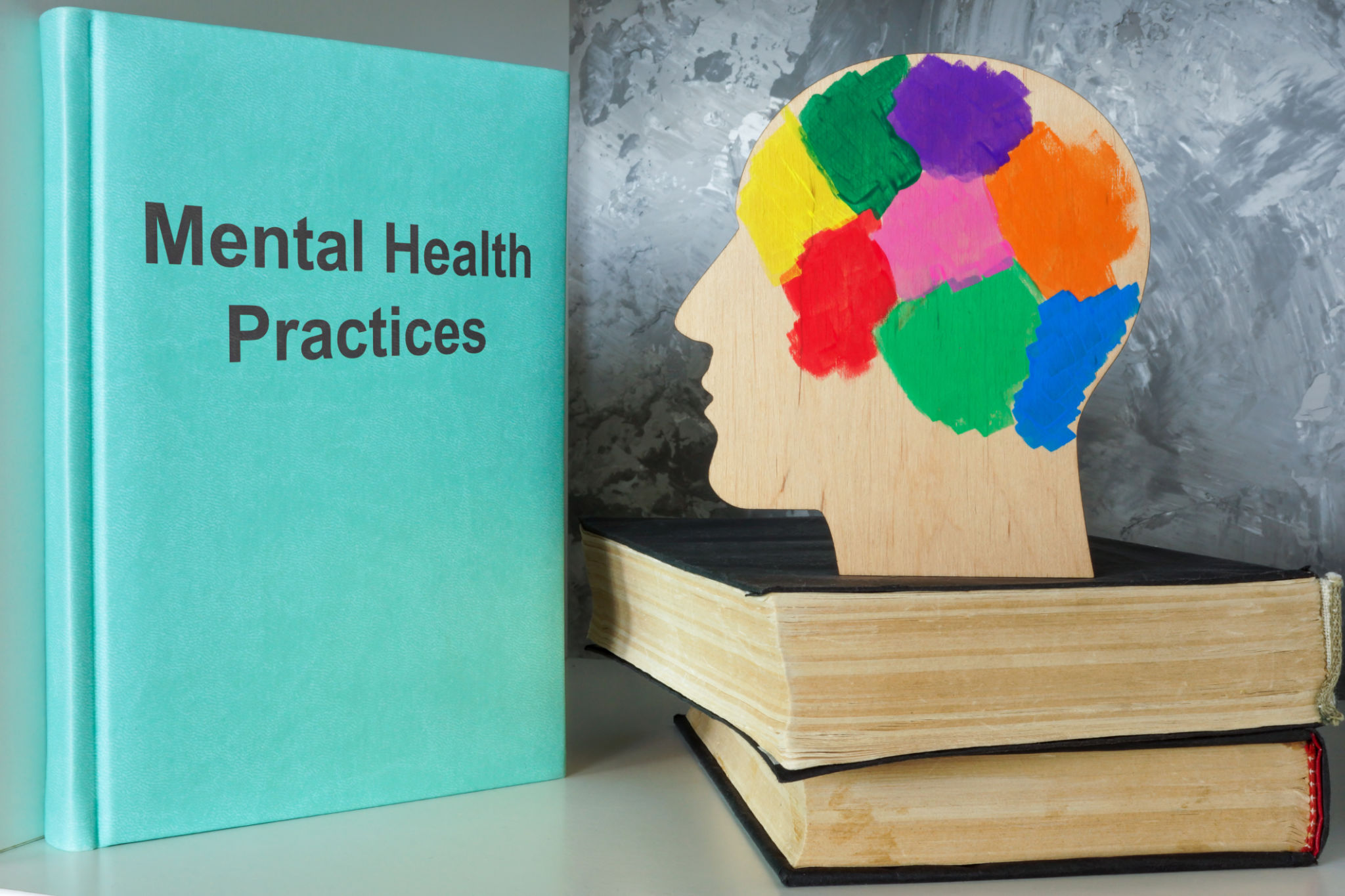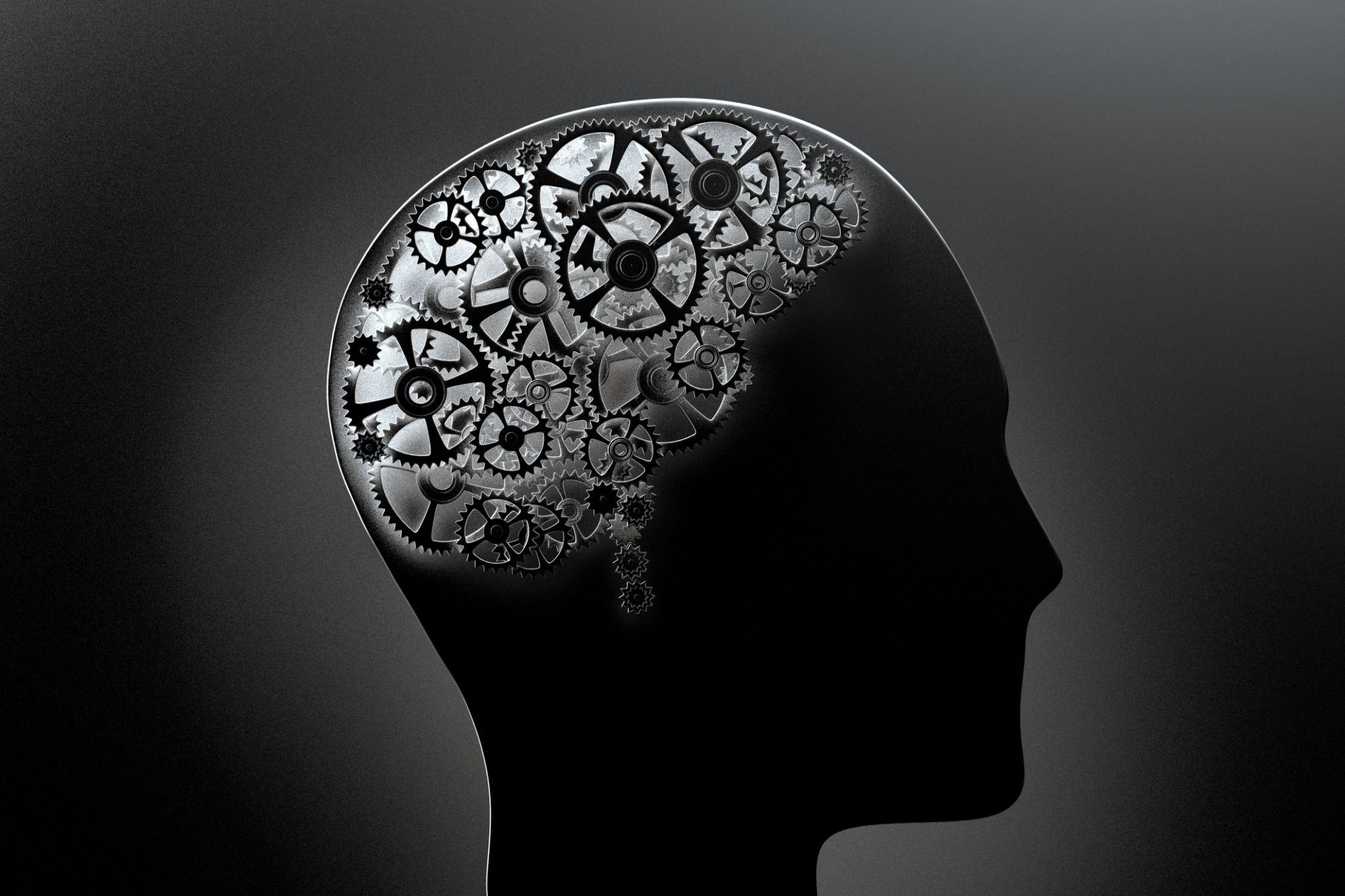The Mind-Body Connection: How Movement and Awareness Transform Mental Health
Introduction: Rediscovering an Ancient Truth
Imagine for a moment that you’re feeling anxious before an important presentation. Notice what happens in your body: your heart rate increases, your breathing becomes shallow, your shoulders tense, and your stomach might feel unsettled. Now imagine the reverse scenario—you’re in a peaceful garden, taking slow, deep breaths, feeling your feet firmly planted on the ground. Almost immediately, your mind begins to quiet and your emotional state shifts toward calm.
This simple observation reveals something profound that modern science is now validating: our minds and bodies are not separate entities but rather two aspects of one integrated system. When we change what’s happening in our body—through movement, breathing, or focused attention—we directly influence our mental and emotional state. This is the foundation of mind-body practices, and understanding this connection opens the door to powerful tools for improving mental health.
For centuries, cultures around the world have developed sophisticated practices based on this understanding. From the moving meditations of ancient China to the mindfulness traditions of Buddhism, from the somatic awareness work developed in the West to the breath-based practices of India, humans have discovered that working with the body provides a direct pathway to mental and emotional well-being.
What makes this particularly exciting is that modern neuroscience has begun to explain exactly how these practices work. We can now see, through brain imaging and physiological measurements, how mind-body practices literally reshape our nervous systems in ways that support mental health. This isn’t just about feeling better temporarily—though that certainly happens. These practices create lasting changes in how our brains and bodies respond to stress, process emotions, and maintain equilibrium.
Understanding mind-body practices begins with recognizing that your body is not just a vessel for your mind, but an intelligent system that’s constantly generating information about your internal state and your relationship to the world around you. Learning to listen to this intelligence and work with it, rather than against it, opens up possibilities for healing and growth that might surprise you.

Defining Mind-Body Practices: More Than Movement, More Than Meditation
Before we explore how these practices improve mental health, we need to understand what distinguishes mind-body approaches from other forms of exercise or relaxation. Think of mind-body practices as bridges that connect your conscious awareness with your body’s natural wisdom. They’re different from conventional exercise because they emphasize internal awareness over external performance, and they’re different from purely mental practices because they use the body as an active participant in the healing process.
At their core, mind-body practices share four essential characteristics that work together to create their therapeutic effects. First, they cultivate what we call “interoceptive awareness”—the ability to sense what’s happening inside your body. This might sound simple, but most of us go through our days with limited awareness of our internal experience. Mind-body practices help you develop sensitivity to subtle signals like muscle tension, breathing patterns, heart rate changes, and emotional sensations that arise in different parts of your body.
Second, these practices emphasize present-moment attention. Rather than letting your mind wander to yesterday’s problems or tomorrow’s worries, you learn to anchor your awareness in the immediate experience of your body in this moment. This isn’t about forcing your mind to be blank—that’s neither possible nor necessary. Instead, it’s about developing the skill to notice when your attention has wandered and gently guide it back to your present-moment experience.
Third, mind-body practices integrate breath as a central element. Your breath serves as a bridge between voluntary and involuntary functions, between your conscious mind and your autonomic nervous system. By working consciously with breathing patterns, you can directly influence your stress response, emotional regulation, and mental clarity. Think of your breath as a remote control for your nervous system—once you learn to use it skillfully, you have a powerful tool available anytime, anywhere.
Fourth, these practices cultivate what we might call “non-judgmental observation.” Rather than trying to change or fix what you notice, you first learn simply to observe your experience with curiosity and kindness. This might seem passive, but it’s actually quite revolutionary. Most of us have learned to fight against uncomfortable sensations or emotions, which often makes them stronger and more persistent. Mind-body practices teach you that awareness itself has transformative power.
When we add movement to these foundational elements, we create what are called “mind-body movement practices.” These combine the benefits of physical activity with the awareness-building aspects of meditation. Examples include yoga, tai chi, qigong, mindful walking, and various forms of expressive movement. The movement component adds several important dimensions: it helps discharge physical tension, improves circulation and energy flow, provides a concrete focus for attention, and can access emotional patterns that are stored in the body’s muscle memory.
What distinguishes these movement practices from regular exercise is the quality of attention you bring to them. When you’re jogging while planning your day or lifting weights while watching television, you’re certainly getting physical benefits, but you’re missing the mind-body integration that creates psychological healing. In mind-body movement, the physical activity becomes a vehicle for developing awareness, presence, and emotional regulation.
The Neuroscience Revolution: How Mind-Body Practices Reshape Your Brain
To understand how mind-body practices improve mental health, we need to take a journey into your brain and nervous system. This might seem like a detour from the practical aspects of these practices, but understanding the mechanisms helps explain why simple techniques like breathing exercises or gentle movements can have such profound effects on conditions like depression, anxiety, and trauma.
Your brain is not a fixed structure but rather a dynamic, constantly changing network that rewires itself based on your experiences. Neuroscientists call this “neuroplasticity,” and it’s perhaps the most hopeful discovery in modern brain science. Every time you practice paying attention to your breath, every moment you spend moving mindfully, every instance of observing your thoughts without judgment, you’re literally sculpting your brain in ways that support mental health.
The first major change involves a brain region called the insula, which serves as your internal sensing system. The insula processes signals from throughout your body—heart rate, breathing, muscle tension, gut sensations—and integrates this information with your emotional and cognitive experience. Research shows that people with stronger insula function have better emotional regulation, more accurate self-awareness, and greater resilience to stress. Mind-body practices literally grow the insula, making it thicker and more active.
Think of the insula as the translator between your body’s wisdom and your conscious mind. When you practice body awareness, you’re strengthening this translation system. Over time, you become better at recognizing early signs of stress, fatigue, or emotional upset, which allows you to respond before these states become overwhelming. You also become more attuned to positive states, able to notice and cultivate feelings of calm, joy, or vitality as they arise.
The second major change occurs in your prefrontal cortex, the brain region responsible for executive functions like attention, decision-making, and emotional regulation. Mind-body practices strengthen connections between the prefrontal cortex and emotional centers like the amygdala, creating what neuroscientists call “top-down emotional regulation.” This means you develop greater ability to influence your emotional responses through conscious choice rather than being at the mercy of automatic reactions.
This doesn’t mean you suppress or control emotions—that’s neither healthy nor effective. Instead, you develop what researchers call “emotional flexibility.” When challenging emotions arise, you have more space between the trigger and your response. You might still feel angry, sad, or anxious, but you’re less likely to be overwhelmed by these feelings or to act impulsively based on them. You develop the capacity to feel your emotions fully while also maintaining access to your rational, decision-making abilities.
The third crucial change involves your default mode network, a collection of brain regions that become active when your mind is at rest. In many people, especially those prone to depression or anxiety, the default mode network generates repetitive, self-focused thinking patterns—worrying about the future, ruminating about the past, engaging in self-criticism. Mind-body practices help quiet this mental chatter, reducing what researchers call “mind-wandering” and increasing present-moment awareness.
Your autonomic nervous system—the part that controls functions like heart rate, breathing, and digestion—also undergoes significant changes through mind-body practice. These practices strengthen your parasympathetic nervous system, which is responsible for the “rest and digest” response that promotes healing and restoration. They also improve what’s called “heart rate variability,” a measure of your nervous system’s flexibility in responding to stress.
At the neurotransmitter level, mind-body practices influence the chemical messengers that regulate mood, attention, and stress responses. Regular practice increases GABA, the brain’s primary calming neurotransmitter, and optimizes serotonin function, which supports mood stability. These practices also help regulate cortisol, the primary stress hormone, preventing the chronic elevation that contributes to anxiety, depression, and numerous physical health problems.
Perhaps most remarkably, mind-body practices appear to influence gene expression through epigenetic mechanisms. This means they can turn on genes that support resilience and healing while turning off genes associated with inflammation and stress responses. These changes can happen surprisingly quickly—some studies show measurable epigenetic changes after just eight weeks of practice.

How Mind-Body Practices Address Mental Health Conditions
Now that we understand the neurobiological mechanisms, let’s explore how mind-body practices specifically address common mental health conditions. Each condition involves particular patterns of brain function, nervous system activation, and mind-body disconnection, and different practices can be especially helpful for different challenges.
**Depression and the Restoration of Vitality**
Depression often involves a constellation of mind-body symptoms: fatigue, heaviness, disconnection from physical sensations, shallow breathing, and a general sense of being “stuck” or immobilized. From a neurobiological perspective, depression is associated with reduced activity in brain regions responsible for motivation and pleasure, increased activity in areas associated with self-focused rumination, and dysregulation of neurotransmitter systems that support mood stability.
Mind-body practices address depression through multiple pathways. The movement component helps counteract the physical stagnation that often accompanies depression. Even gentle movement stimulates circulation, increases energy, and activates brain regions associated with motivation and reward. The breathing practices help regulate the autonomic nervous system, shifting from the shallow, restricted breathing patterns common in depression toward deeper, more nourishing breath patterns.
The awareness component of mind-body practices helps people with depression reconnect with their bodies in ways that can be profoundly healing. Depression often involves a kind of dissociation from physical experience—you might go through your days without really feeling present in your body. Practices that cultivate body awareness help restore this connection, often bringing access to emotions, insights, and sources of strength that weren’t available when you were disconnected from your physical experience.
The non-judgmental observation aspect is particularly important for depression, which often involves harsh self-criticism and negative thought patterns. Learning to observe your experience with kindness and curiosity, rather than judgment and criticism, helps interrupt the mental habits that maintain depressive states. Over time, people often discover that they can feel difficult emotions without being defined or overwhelmed by them.
**Anxiety and the Regulation of Arousal**
Anxiety involves patterns of chronic nervous system activation, often accompanied by racing thoughts, muscle tension, rapid or shallow breathing, and hypersensitivity to both internal sensations and external stimuli. People with anxiety often become afraid of their own bodily sensations, interpreting normal physiological changes as signs of danger.
Mind-body practices are particularly effective for anxiety because they work directly with the nervous system dysregulation that underlies anxious states. Breathing practices provide immediate tools for calming nervous system activation. When you extend your exhale longer than your inhale, for example, you directly stimulate the vagus nerve, which activates your body’s relaxation response.
The body awareness component helps people with anxiety develop a more friendly relationship with their physical sensations. Rather than interpreting increased heart rate or muscle tension as catastrophic signs, you learn to recognize these as normal responses that will naturally subside when you respond skillfully. This breaks the cycle where anxiety about anxiety symptoms creates even more anxiety.
Movement practices can be especially helpful for anxiety because they provide a way to discharge the physical energy that builds up in anxious states. Gentle, flowing movements help metabolize stress hormones, while the focus required for mindful movement helps interrupt anxious thought patterns. Many people find that after a mind-body movement practice, their minds feel clearer and their bodies feel more settled.
**Trauma and the Restoration of Safety**
Trauma involves a disruption of the normal stress response system, often leaving people feeling disconnected from their bodies, hypervigilant to threat, or frozen in states of collapsed energy. Traditional talk therapy, while valuable, sometimes struggles to address the somatic aspects of trauma that are stored in the body’s memory systems.
Mind-body practices offer unique benefits for trauma recovery because they work directly with the nervous system patterns that trauma disrupts. However, trauma-informed mind-body work requires special sensitivity and often benefits from guidance by practitioners who understand both trauma and somatic approaches.
For people with trauma histories, the first step is often learning to recognize and work with nervous system states rather than trying to push through or ignore physical sensations. This might involve learning to identify when you’re in a state of hyperarousal (feeling anxious, agitated, or overwhelmed) versus hypoarousal (feeling numb, disconnected, or collapsed), and developing specific practices for each state.
Mind-body practices help restore what trauma specialists call “window of tolerance”—the zone where you can experience emotions and sensations without becoming overwhelmed or shutting down. Through gentle, titrated exposure to body awareness, movement, and breathing practices, people can gradually expand their capacity to be present with their experience.
The empowerment aspect of mind-body practices is also crucial for trauma recovery. Trauma often involves experiences of helplessness or loss of control over one’s body. Learning that you can influence your nervous system state through breathing, movement, or attention helps restore a sense of agency and self-efficacy that’s essential for healing.
**Stress and the Development of Resilience**
Chronic stress involves patterns of sustained nervous system activation that, over time, can lead to burnout, physical health problems, and mental health challenges. Many people feel trapped in cycles where external demands exceed their capacity to cope, leading to feelings of overwhelm and depletion.
Mind-body practices address stress by developing what researchers call “stress resilience”—the ability to respond to challenges without becoming overwhelmed and to recover more quickly when you do become stressed. This isn’t about eliminating stress, which isn’t possible or even desirable, but rather about changing your relationship to stress so that it doesn’t dominate your experience.
The immediate stress-relief benefits of mind-body practices are well-documented. A few minutes of conscious breathing or gentle movement can shift your nervous system from a state of high activation to greater calm. But the deeper benefit is the cumulative effect of regular practice, which strengthens your overall capacity to handle stress.
Regular practitioners often report that they still encounter stressful situations, but these situations don’t knock them off balance in the same way. They recover more quickly, they’re less likely to carry stress from one situation into the next, and they’re better able to maintain perspective during challenging times. This resilience develops naturally through the nervous system strengthening that occurs with consistent practice.

The Integration Challenge: How Mind-Body Practices Create Lasting Change
One of the most important aspects of mind-body practices is how they facilitate integration—bringing together aspects of your experience that may have become disconnected or fragmented. This integration occurs at multiple levels and is often the key to lasting psychological healing and growth.
**Emotional Integration and Regulation**
Many mental health challenges involve some form of emotional dysregulation—emotions that feel too intense, too unpredictable, or too disconnected from your conscious experience. Mind-body practices help restore healthy emotional regulation by improving the communication between your emotional brain centers and your rational, decision-making regions.
This doesn’t mean controlling or suppressing emotions, but rather developing what psychologists call “emotional intelligence”—the ability to recognize, understand, and work skillfully with your emotional experience. When you practice observing emotions as they arise in your body, you often discover that emotions have a natural lifecycle: they arise, peak, and naturally subside when you don’t resist or amplify them.
Many people are surprised to discover how much emotional information is available through body awareness. Anger might be felt as heat in your chest or tension in your jaw. Sadness might be experienced as heaviness in your heart or tears wanting to form. Joy might arise as lightness in your chest or energy flowing through your limbs. Learning to read these bodily signals gives you much more nuanced information about your emotional state than relying on thoughts alone.
**Cognitive Integration and Clarity**
Mind-body practices also support cognitive integration—the ability to think clearly, make good decisions, and maintain perspective during challenging times. This happens partly through the stress reduction effects we’ve discussed, but also through more specific cognitive benefits.
Many people notice improved concentration and focus after establishing a mind-body practice. This makes sense when you consider that these practices are essentially attention training. Every time you notice your mind has wandered and gently bring it back to your breath or body awareness, you’re strengthening your capacity for sustained attention.
The present-moment focus of mind-body practices also helps break cycles of rumination and worry that can dominate mental experience in conditions like depression and anxiety. When you’re fully absorbed in the sensations of your breath or the movements of your body, there’s less mental space for repetitive, unhelpful thinking patterns.
**Behavioral Integration and Healthy Habits**
Perhaps most importantly, mind-body practices help integrate new awareness into daily behavior. It’s one thing to feel calm and centered during a formal practice session, but the real test is whether these benefits carry over into your regular life—your relationships, work, and daily challenges.
This integration happens gradually and often in subtle ways. You might notice that you automatically take a deep breath before responding to a challenging email, or that you’re more aware of tension building in your shoulders during a stressful meeting. These small moments of awareness can prevent stress from accumulating and help you make better choices throughout your day.
Many practitioners report that they become more attuned to their body’s signals about what supports their wellbeing. They might notice which foods give them energy versus which ones make them sluggish, or they might become more aware of how different activities affect their mood and stress levels. This increased self-awareness naturally leads to healthier choices.
The behavioral changes that emerge from mind-body practice tend to be sustainable because they arise from internal awareness rather than external rules or willpower. When you can feel the difference between a choice that supports your wellbeing and one that undermines it, the healthy choice becomes more attractive and easier to maintain.

The Therapeutic Relationship: Working with Guidance and Community
While mind-body practices can certainly be learned and practiced independently, many people benefit from working with qualified teachers or participating in group programs, especially when addressing mental health challenges. The relationship with a skilled guide can provide important elements that support healing and growth.
A knowledgeable teacher can help you navigate the sometimes challenging territory that opens up when you begin paying closer attention to your internal experience. When you start practicing body awareness, you might encounter emotions, memories, or sensations that feel overwhelming or confusing. An experienced guide can help you work with these experiences skillfully, knowing when to slow down, when to seek additional support, and how to maintain a sense of safety while exploring challenging territory.
Teachers can also help you adapt practices to your specific needs and circumstances. What works beautifully for one person might not be the best approach for someone with different challenges or life circumstances. A skilled teacher can suggest modifications, alternative practices, or different emphases that better serve your particular healing journey.
The group element of many mind-body programs provides another important therapeutic factor: the experience of community and shared humanity. Many mental health challenges involve feelings of isolation, shame, or the sense that you’re the only one struggling with particular difficulties. Practicing alongside others who are on similar journeys can provide powerful medicine for these feelings.
Group practice also provides opportunities to witness different ways of approaching challenges and to receive support and encouragement during difficult periods. Many people find that the relationships formed in mind-body practice groups become ongoing sources of support and inspiration.
Evidence-Based Benefits: What Research Tells Us
The scientific evidence supporting mind-body practices for mental health has grown tremendously over the past few decades. Major medical institutions now integrate these approaches into their treatment protocols, and insurance companies increasingly cover programs like Mindfulness-Based Stress Reduction for various health conditions.
Large-scale meta-analyses—studies that combine results from multiple research trials—consistently show moderate to large effects for mind-body practices across a range of mental health conditions. For depression, effect sizes often rival those of antidepressant medications, with the added benefit of no negative side effects. For anxiety disorders, mind-body practices show particularly strong effects, often providing both immediate symptom relief and long-term resilience building.
What’s particularly encouraging is that these benefits tend to increase over time rather than diminishing. Unlike some interventions that provide temporary relief, mind-body practices seem to create cumulative benefits that grow stronger with continued practice. Many studies show that benefits are maintained or even enhanced at follow-up periods of six months to several years.
The research also suggests that mind-body practices can be effectively combined with other treatments. They often enhance the benefits of psychotherapy, and some studies suggest they may improve response to psychiatric medications. This makes them valuable additions to comprehensive treatment approaches rather than necessarily replacements for other interventions.

Personal Transformation: What to Expect on the Journey
Understanding the mechanisms and research behind mind-body practices is valuable, but ultimately, the proof is in your personal experience. While everyone’s journey is unique, there are some common patterns that many people experience as they develop a mind-body practice.
In the beginning, you might notice primarily physical benefits: reduced muscle tension, improved sleep, or greater energy. These changes often happen relatively quickly and provide motivation to continue practicing. You might also notice periods of relaxation or calm during practice sessions, which can feel like islands of peace in otherwise stressful days.
As your practice develops, you’ll likely notice increased awareness of your internal experience throughout the day. You might catch yourself holding your breath during stressful moments, or notice tension building in your body before you’re consciously aware of feeling stressed. This increased awareness is like developing an early warning system that allows you to respond to challenges before they become overwhelming.
Many people report improved emotional regulation as their practice matures. Difficult emotions might still arise, but they feel more manageable and less likely to derail your entire day. You might discover that you can feel angry without saying something you’ll regret, or experience sadness without sinking into despair. This emotional resilience often extends to your relationships, work, and other life challenges.
Over time, many practitioners describe a fundamental shift in their relationship to themselves and their experience. There’s often a growing sense of self-compassion and acceptance, along with decreased self-criticism and judgment. You might find that you’re more comfortable with uncertainty, more able to be present with whatever arises, and more trusting of your own inner wisdom.
It’s important to recognize that this journey isn’t always smooth or linear. You might have periods where practice feels easy and beneficial, followed by times when it feels difficult or you don’t notice much benefit. You might encounter challenging emotions or memories as you develop greater body awareness. These experiences are normal parts of the process and often indicate that healing and growth are occurring at deep levels.
The key is to approach your practice with patience, curiosity, and self-compassion. Remember that you’re not trying to achieve a particular state or fix something that’s wrong with you. Instead, you’re developing a friendly, aware relationship with your experience as it is, trusting that this awareness itself has the power to facilitate healing and transformation.
Conclusion: Embarking on Your Own Journey
Mind-body practices offer a pathway to mental health and wellbeing that honors both the wisdom of ancient traditions and the insights of modern science. They provide practical tools that you can use anytime, anywhere, while also supporting deep, lasting changes in how your nervous system responds to life’s challenges.
The beauty of these practices is that they’re infinitely adaptable to your particular needs, interests, and circumstances. Whether you’re drawn to the gentle movements of tai chi, the focused awareness of mindfulness meditation, the somatic exploration of Feldenkrais, or any of the many other approaches available, you can find practices that resonate with your temperament and support your healing journey.
Perhaps most importantly, mind-body practices offer a way of relating to yourself and your experience that’s fundamentally different from our culture’s typical approaches to mental health. Rather than viewing symptoms as problems to be eliminated or emotions as inconveniences to be managed, these practices invite you to see your entire experience—including the challenging parts—as information that can guide you toward greater wholeness and wellbeing.
As you consider exploring mind-body practices for your own mental health, remember that the journey is more important than any particular destination. Each moment of awareness, each conscious breath, each gentle movement is a step toward greater integration and healing. Trust your own experience, be patient with yourself, and remain open to the surprising ways that working with your body can transform your mind and enrich your life.
The integration of mind and body isn’t just a therapeutic technique—it’s a return to a more natural, whole way of being human. In our fragmented, fast-paced world, these practices offer an invitation to come home to yourself, to rediscover the wisdom that lives in your bones and breath, and to find peace and strength that no external circumstance can take away.
